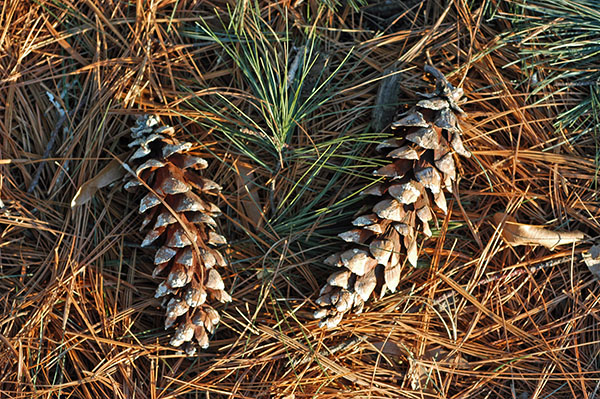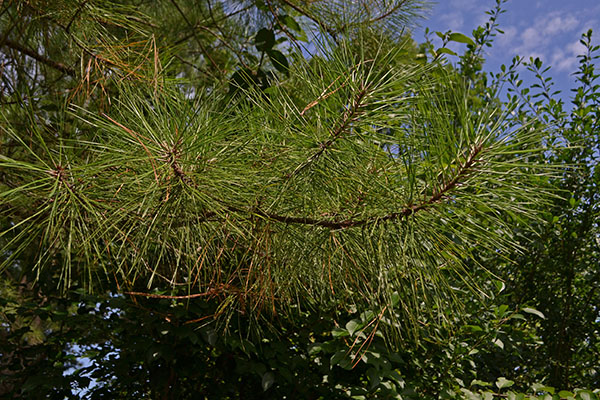Pinus strobus
Eastern White Pine
Newfoundland to Georgia
50-80 feet (120 feet); candle growth; elongation before leaves and needles are present.
Grows best in fertile, deep, moist soils with plenty of sunlight. Has the ability to survive on rocky ridges and wet bogs.
Eastern White Pine is a five needle pine native to northeatern Canada and south into Georgia, Illinois and Iowa. In youth it has symmetrically pyramidal habit of soft, pleasant appearance. Middle aged and older trees have a crown composed of several horizontal and ascending branches; gracefully plume-like in outline and very graceful, compared to other conifers. Eastern White Pine is a fast grower and will reach ultimate dimensions of 50-80 feet tall by 20-40 feet wide, if not larger. Native trees can grow over 150 feet tall. The bark is thin, smooth and grayish green when young. Older trees have darker bark with deeply furrowed, scaly, thick ridges. Needles are bluish to bright green, remaining persistant for two years. They're slender, 2-4 inches long, apex soft to the touch. Needles are soft and pliable, with finely toothed margins. Leaf sheath is about .5 inch long and falls away. Male flowers are yellow, female flowers are pink. Cones are subterminal, pendant, 3 to 7 inches long, stalked, cylindrical, often curved, resinous and light brown. They mature in autumn of the second year. Eastern White Pine is a very handsome conifer valuable for parks, estates and large properties. A bird-attracting tree. It also makes a beautiful sheared hedge. Not at all tolerant of wind, salt or air pollution.
Leaves arranged in bundles of five needles connected to a fascicle.
Buds are ovoid with a sharply pointed apex and resinous.
Thin, smooth, and dark grayish-brown at maturity.
Monoecious; female reproductive structures are pink, male are yellow.
Cones are subterminal, cylindrical, and often curved
Seed.
'White Mountain' - foliage.
'Variegata'






